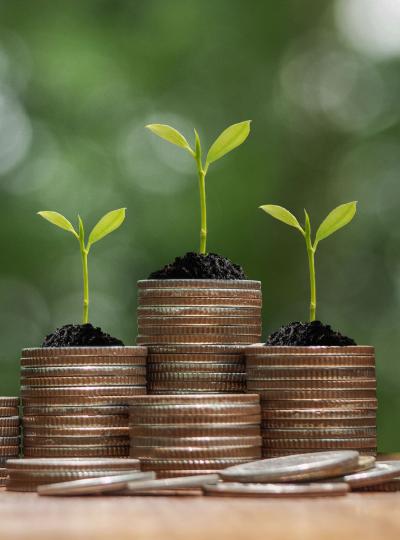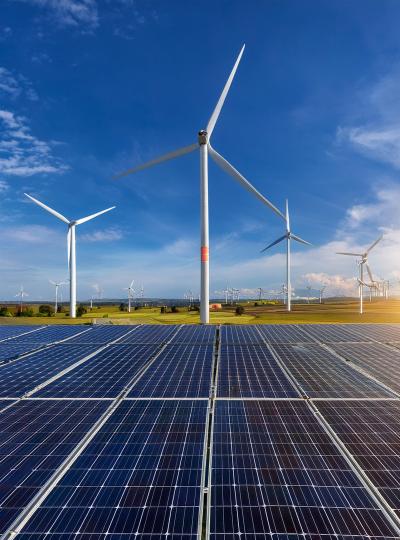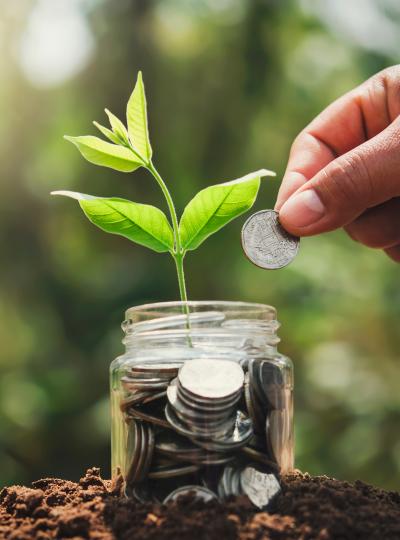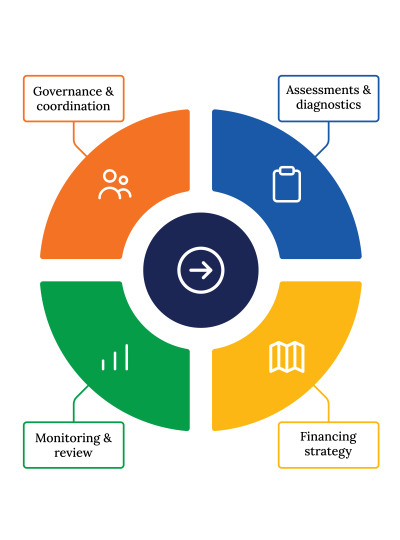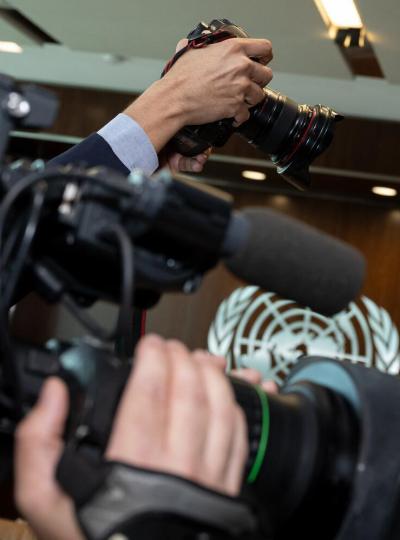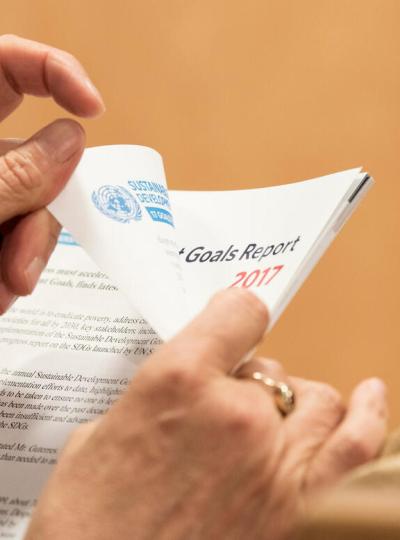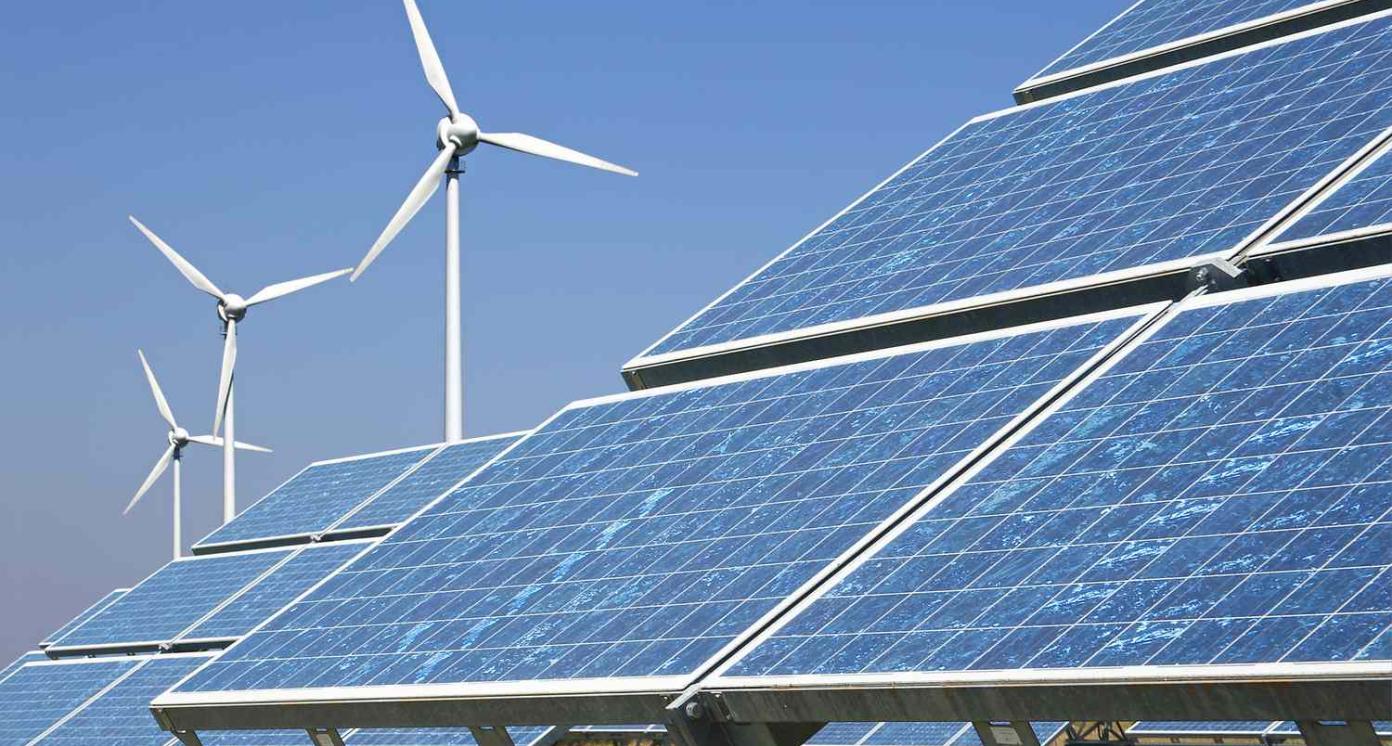Utility-Scale Solar and Wind Farms
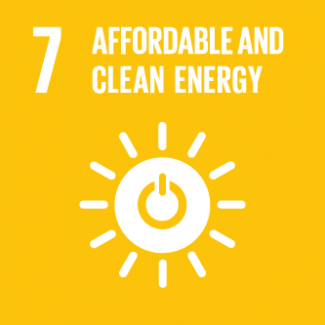
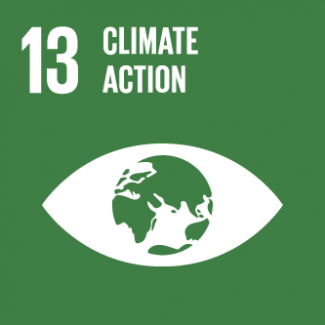
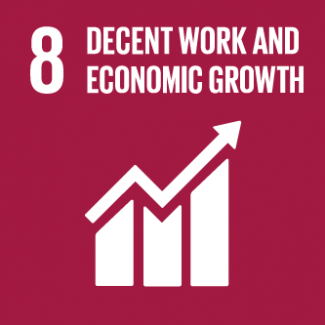
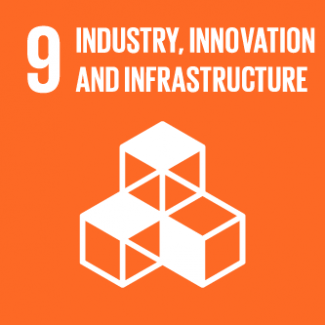
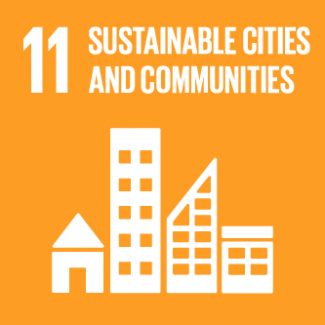
Business Model Description
Develop, construct, and operate utility-scale solar and wind farms to generate renewable electricity for sale to the Jamaica Public Service Company (JPS) under long-term Power Purchase Agreements (PPAs). Electricity is fed directly into the national grid, reducing reliance on fossil fuels and lowering energy costs.
Expected Impact
Reduce Jamaica's dependence on imported fossil fuels, lower electricity costs for consumers, and decrease greenhouse gas emissions.
How is this information gathered?
Investment opportunities with potential to contribute to sustainable development are based on country-level SDG Investor Maps.
Disclaimer
UNDP, the Private Finance for the SDGs, and their affiliates (collectively “UNDP”) do not seek or solicit investment for programmes, projects, or opportunities described on this site (collectively “Programmes”) or any other Programmes, and nothing on this page should constitute a solicitation for investment. The actors listed on this site are not partners of UNDP, and their inclusion should not be construed as an endorsement or recommendation by UNDP for any relationship or investment.
The descriptions on this page are provided for informational purposes only. Only companies and enterprises that appear under the case study tab have been validated and vetted through UNDP programmes such as the Growth Stage Impact Ventures (GSIV), Business Call to Action (BCtA), or through other UN agencies. Even then, under no circumstances should their appearance on this website be construed as an endorsement for any relationship or investment. UNDP assumes no liability for investment losses directly or indirectly resulting from recommendations made, implied, or inferred by its research. Likewise, UNDP assumes no claim to investment gains directly or indirectly resulting from trading profits, investment management, or advisory fees obtained by following investment recommendations made, implied, or inferred by its research.
Investment involves risk, and all investments should be made with the supervision of a professional investment manager or advisor. The materials on the website are not an offer to sell or a solicitation of an offer to buy any investment, security, or commodity, nor shall any security be offered or sold to any person, in any jurisdiction in which such offer would be unlawful under the securities laws of such jurisdiction.
Country & Regions
Sector Classification
Renewable Resources and Alternative Energy
The country’s geographical advantages, including high solar insulation and consistent wind patterns, provide a solid foundation for expanding renewable energy capacity. However, Jamaica still relies heavily on fossil fuels particularly oil, which account for about 89% of its energy consumption. Since Jamaica imports most of its oil from other countries, it is subject to high prices.
The Vision 2030 Jamaica framework further underscores the importance of transitioning to renewable energy to enhance energy security, reduce dependence on imported fossil fuels, and mitigate the impacts of climate change.
Alternative Energy
Development Need
Jamaica relies heavily on imported fossil fuels, which account for over 90% of electricity generation, leading to high energy costs and significant greenhouse gas emissions. Transitioning to utility-scale solar and wind energy addresses energy security, affordability, and climate change mitigation
Policy Priority
The government has set ambitious targets under Vision 2030 and the National Energy Policy 2009–2030 to achieve 50% renewable electricity by 2030. Policies like the Electricity Act (2015) and renewable energy tenders prioritize utility-scale solar and wind projects to diversify the energy mix
Gender Inequalities and Marginalization Issues
Women, particularly in rural areas, face higher energy poverty due to unreliable access and high costs. Utility-scale renewable projects provide affordable electricity, reduce domestic burdens, and create employment opportunities in technical roles
Investment opportunities introduction
projects like the Paradise Park Solar Farm (51 MW) and Wigton Wind Farm demonstrate the viability of large-scale renewables. Future investments could focus on expanding capacity, integrating battery storage systems, and scaling private-sector participation in renewable energy development.
Key Bottlenecks
Challenges include high upfront costs for renewable infrastructure, regulatory delays in project approvals, and grid reliability issues due to intermittent renewable energy sources. Additionally, limited local financing options may deter private-sector investment.
Wind Technology and Project Developers
Pipeline Opportunity
Utility-Scale Solar and Wind Farms
Develop, construct, and operate utility-scale solar and wind farms to generate renewable electricity for sale to the Jamaica Public Service Company (JPS) under long-term Power Purchase Agreements (PPAs). Electricity is fed directly into the national grid, reducing reliance on fossil fuels and lowering energy costs.
Business Case
Market Size and Environment
> USD 1 billion
5% - 10%
Amount of energy generated from Utility Scale Solar and wind farm
Installed Capacity and Growth: Jamaica's current wind energy capacity stands at 99 MW, with significant growth potential. The country aims to achieve 50% renewable energy generation by 2030, implying a substantial increase in wind power capacity. This target, updated from the previous 20% goal, indicates strong government commitment to renewable energy expansion.
Growth Potential: Jamaica’s wind resource assessments indicate that wind power alone could meet up to 50% of the island’s electricity demand, driven by consistent trade winds and favorable geographic conditions, making it a cornerstone of the country’s clean energy transition
Energy Mix Contribution: Wind and solar account for 12% of Jamaica’s electricity mix (9% wind, 3% solar). Achieving the 50% target will require substantial increases in utility-scale projects, supported by competitive procurement and policy incentive.
Indicative Return
20% - 25%
Energy Demand and Market Stability: Jamaica’s reliance on imported fossil fuels (90% of energy needs) drives demand for cost-effective renewables. Wind farms like Wigton and Solar Farms such as Eight Rivers secure long-term off-take agreements, ensuring consistent revenue and high returns
Resource Potential: Jamaica boasts high solar irradiance levels (5–7 kWh/m²/day) and strong coastal winds, making it ideal for solar and wind energy projects. The wind potential alone could meet up to 50% of the country’s energy demand, while solar PV systems can operate efficiently year-round due to the tropical climate.
Incentives and Financing: Tax credits, duty waivers, and concessional loans from international programs like the IRA and IFC reduce capital costs. For instance, the BMR Jamaica Wind Project secured funding from OPIC and the Government of Canada, improving project economics and boosting ROI. (https://bmrenergy.com/projects/jamaica-wind/)
Investment Timeframe
Short Term (0–5 years)
Construction Timelines: Projects like the Paradise Park Solar Farm (37 MW) and BMR Jamaica Wind Farm were developed and operational within 3 years demonstrating the feasibility of achieving returns in under 5 years.
Revenue Generation: Long-term Power Purchase Agreements (PPAs) with JPS ensure immediate revenue flow upon commissioning. For example, BMR’s wind farm began generating income as soon as it became operational in 2016, selling power at competitive rates
Ticket Size
> USD 10 million
Market Risks & Scale Obstacles
Capital - CapEx Intensive
Market - Highly Regulated
Impact Case
Sustainable Development Need
High Greenhouse Gas Emissions: Jamaica’s energy sector is a major contributor to CO2 emissions, with fossil fuels accounting for over 90% of electricity generation. This reliance exacerbates climate change and undermines global sustainability goals.
Limited Renewable Energy Access: Despite abundant renewable resources, Jamaica’s renewable energy capacity remains underutilized, with only 12% of electricity coming from renewables. Expanding access to clean energy is critical for sustainable development and reducing environmental impacts.
Unaffordable Electricity Costs: Jamaica’s electricity tariffs are among the highest in the Caribbean, averaging $0.30/kWh. High costs burden households and businesses, hindering economic growth and reducing access to reliable power
Gender & Marginalisation
Climate Action Inclusion: Jamaica’s Climate Change Policy Framework lacks systematic integration of gender considerations. Women’s unique vulnerabilities to climate impacts are often overlooked, limiting their participation in decision-making processes related to renewable energy investments.
Access to Energy: In rural and underserved areas of Jamaica, women often face limited access to electricity, which exacerbates their domestic burdens. Utility-scale renewables can improve energy access, reducing the time spent on unpaid care work and enhancing women’s quality of life.
Expected Development Outcome
Reduce Jamaica’s reliance on fossil fuels, cutting greenhouse gas emissions by thousands of tons annually. For example, projects like BMR Wind reduce CO2 by 66,000 tons per year, contributing to climate change mitigation goals. Renewable energy adoption contributes to the government’s target of a 25% unconditional reduction in emissions by 2030 under the Paris Agreement.
Enhanced Energy Security: By diversifying Jamaica’s energy mix with solar and wind, the IOA reduces dependence on imported fossil fuels, protecting the economy from global oil price volatility and ensuring a stable energy supply.
Economic Growth and Job Creation: Utility-scale renewable projects create skilled and unskilled jobs in construction, operations, and maintenance, fostering economic growth. Increased energy access also supports local businesses and industries
Gender & Marginalisation
Empowerment Through Decision-Making: The integration of gender-responsive climate strategies, like Jamaica’s GCCSAP, ensures women’s inclusion in renewable energy decision-making processes, addressing systemic underrepresentation and promoting equitable leadership roles
Improved Access for Rural Communities: Renewable energy projects enhance electricity access in underserved rural areas, reducing energy poverty and supporting marginalized groups, including female-headed households, who face greater economic constraints
Primary SDGs addressed

7.1.1 Proportion of population with access to electricity
Renewables account for approximately 12% of Jamaica’s electricity mix, with wind contributing 9% and solar 3%. This reflects a significant gap to meet the 50% renewable energy target by 2030
Jamaica’s target is to increase the share of renewable energy in its electricity mix to 50% by 2030

13.2.2 Total greenhouse gas emissions per year
Indicator 13.2.2: Total Greenhouse Gas Emissions- Jamaica’s annual CO2 emissions from energy are approximately 7 million metric tons, primarily due to fossil fuel dependence. (NDCs) (https://www.iea.org/countries/jamaica/emissions)
The government aims to reduce emissions by 25% by 2030 under its Nationally Determined Contributions.
Secondary SDGs addressed



Directly impacted stakeholders
People
Gender inequality and/or marginalization
Planet
Indirectly impacted stakeholders
People
Gender inequality and/or marginalization
Planet
Public sector
Outcome Risks
Land Use Conflicts: Expanding renewable energy infrastructure, such as solar farms and wind turbines, requires significant land, potentially displacing agricultural activities or impacting tourism areas, which are critical to Jamaica’s economy.
Grid Reliability Challenges: The intermittent nature of renewables like solar and wind may strain Jamaica’s outdated grid infrastructure, leading to reliability issues and requiring costly upgrades to ensure stable electricity supply.
Economic Burden on Low-Income Households: High upfront costs for renewable energy infrastructure may lead to increased electricity tariffs during the transition phase, disproportionately affecting low-income households already burdened by high energy costs.
Environmental Disruption: Utility-scale renewable projects could disrupt local ecosystems, including deforestation for solar farms or harm to bird populations from wind turbines, posing risks to biodiversity and natural habitats.
Impact Risks
External Risk: Extreme weather events, such as hurricanes, could damage renewable energy infrastructure, delaying implementation and reducing the expected climate resilience benefits.
Execution Risk: Delays in regulatory approvals, financing, or construction could prevent Jamaica from achieving its 50% renewable energy target by 2030, undermining energy transition goals.
Drop-off Risk: Positive impacts, such as reduced emissions and improved energy access, may decline if renewable energy systems are not maintained or lack long-term funding.
Efficiency Risk: High upfront costs and inefficiencies in project execution could result in suboptimal resource use, delaying the transition to renewables and increasing financial burdens.
Impact Classification
What
Scaling utility-scale solar and wind projects, reducing reliance on fossil fuels, cutting greenhouse emissions, and enhancing energy security.
Who
Population (households), overall environment
Risk
Execution delays due to regulatory bottlenecks, external risks like hurricanes damaging infrastructure, and stakeholder participation risks if community needs are overlooked.
Contribution
Adds significant value by accelerating Jamaica’s renewable energy transition
How Much
Add significant capacity (e.g., Wigton Wind Farm at 60 MW and Content Solar Farm at 20 MW), contributing to Jamaica’s renewable energy mix while reducing CO2 emissions.
Impact Thesis
Reduce Jamaica's dependence on imported fossil fuels, lower electricity costs for consumers, and decrease greenhouse gas emissions.
Enabling Environment
Policy Environment
Vision 2030: This development plan integrates renewable energy goals to ensure sustainable economic growth and environmental protection, directly supporting utility-scale projects
National Renewable Energy Policy 2009–2030: A subset of the National Energy Policy, it focuses on diversifying Jamaica’s energy mix by promoting large-scale renewable energy projects like wind and solar farms
Jamaica's National Energy Policy 2009 – 2030 calls for Jamaica to realise its energy resource potential through the development of renewable energy sources and enhance its international competitiveness, energy security whilst reducing its carbon footprint.
Electricity Act (2015): The act modernizes Jamaica’s electricity sector by enabling independent power producers (IPPs) to contribute to the grid, supporting large-scale solar and wind projects
Financial Environment
Tax Exemptions for Renewable Equipment: Jamaica offers tax exemptions on imported renewable energy equipment, lowering upfront costs for utility-scale solar and wind projects
Green Climate Fund (GCF) Support: Provides concessional financing for large-scale renewable energy initiatives, enhancing affordability and scalability for developers
Feed-in Tariffs (FiTs): Guarantees fixed payments for renewable electricity producers, incentivizing investment in utility-scale solar and wind farms
Regulatory Environment
Office of Utilities Regulation (OUR): OUR oversees electricity sector regulations, facilitating the integration of utility-scale solar and wind projects into the national grid
Grid Interconnection Standards: These standards ensure seamless integration of large-scale renewable energy systems into Jamaica’s grid, reducing technical barriers for developers
Environmental Impact Assessment (EIA) Regulations: Mandates EIAs for large-scale renewable projects to assess environmental risks and ensure sustainability compliance
Marketplace Participants
Private Sector
Wigton Wind Farm, BMR Jamaica Wind Project, Sol Ecolution, Content Solar, Paradise Park and SunTerra Energy.
Government
The Ministry of Science, Energy and Technology (MSET) oversees the implementation of renewable energy policies. Office of Utilities Regulations (OUR).
Private Sector
Jamaica Renewable Energy Association (JREA), Jamaica Energy Resilience Alliance (JERA)
Multilaterals
United States Agency for International Development, Interamerican Development Bank, Caribbean Development Bank, IFC (International Finance Corporation)
Target Locations
References
- (ETI Energy Snapshot - (U.S. Department of Energy, 2020) URL: https://www.energy.gov/eere/articles/jamaica-island-energy-snapshot-2020 Renewable Energies Potential (ECLAC, 2005) URL: https://repositorio.cepal.org/server/api/core/bitstreams/4df12c6e-358f-4925-8a23-2699f1ba9688/content Energy Profile: (Global Energy Monitor, 2020) URL: https://www.gem.wiki/Energy_profile:_Jamaica

